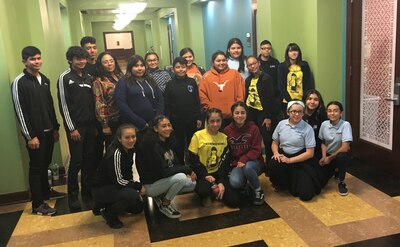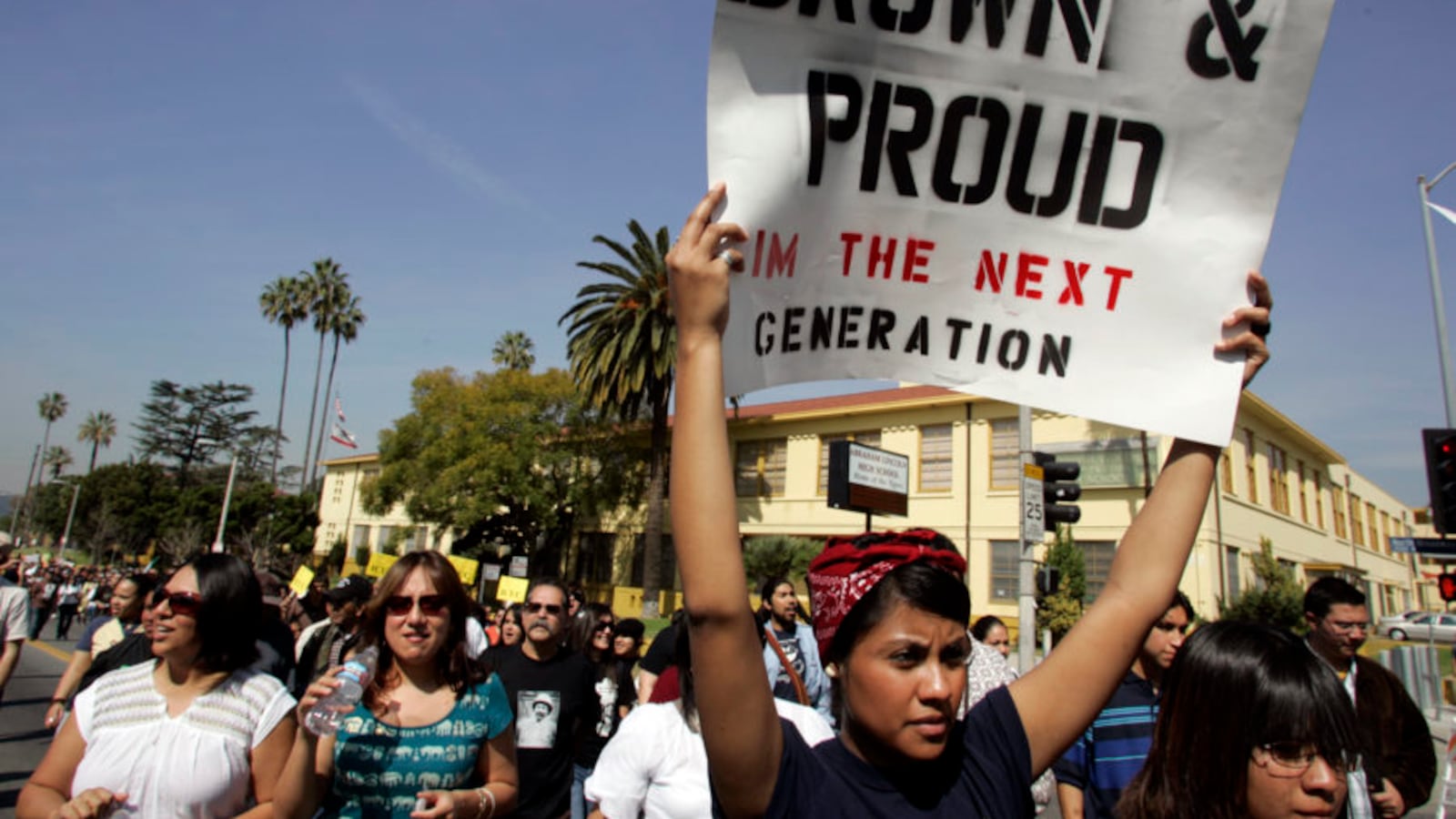Thirteen-year-old Alejandra Del Bosque knows not everyone gets to take a class like hers.
In it, she’s learned about Mexican-American students who staged walkouts in the late 1960s and early 1970s to protest the lack of resources available to their schools. She’s also learned how her state’s school funding system has still been deemed inadequate in recent court rulings.
“There was so much to learn about my heritage that I didn’t know,” Del Bosque said. “But from what I understand, it’s a unique class that’s not everywhere. For me, as a Mexican-American, it’s exciting.”
Her experience remains relatively rare. Fifty years after televised civil rights hearings galvanized the Chicano movement, academics and activists agree that the push for Mexican-American studies still lacks basic resources. And though interest is increasing, in part thanks to President Trump, growth has been slow — especially in K-12 schools, since college-level programs have traditionally gotten more attention.
“That was a big mistake we made,” Juan Tejeda, a professor at Palo Alto College, said last week. “There should have always been a focus on developing culturally relevant curriculum from pre-K through 12.”
He spoke at an event commemorating the 1968 U.S. Commission on Civil Rights Hearings on Mexican-Americans in the Southwest, where he and others took stock of the movement that emerged in the decades since to better engage Latino students. (Of the 58 million Latinos in the U.S., nearly two-thirds are of Mexican descent, and most were born in the U.S.)
That’s long been a challenge for schools, especially as most educators are white. Some research has suggested that when students see themselves reflected in their curriculum, test scores and graduation rates rise. Another study found that taking an ethnic studies course helped reduce dropout rates.
Not many students have access to those courses, though. There’s no solid national data on how many school districts have some form of Mexican-American studies in their schools. California is understood to have taken the lead, while Tejeda estimated that only about 38 of more than 1,000 Texas districts have started a program.
That’s partly due to ongoing political opposition.
Arizona’s ban on teaching Mexican-American studies back in 2010 was a wake-up call for the movement, Tejeda said. (Last year, a federal court ruled that the state’s move was “racist and unconstitutional,” but Tucson hasn’t reinstated its program yet.)
Over the last decade, Mexican-American professors built a network that evolved into a group called Somos MAS. The group began a push for a standard high school elective course in Texas.
After four years of lobbying, the Texas board of education approved the course last year. Battles have also turned toward materials: When the book to be used in schools for Mexican-American studies was released in 2016, it was described by many Chicano scholars as racist for its portrayal of Mexican-Americans as lazy and un-American. That book was later thrown out, as was another the board didn’t like in 2017. Then came a debate over the course’s name, which just ended in September.
Those fights were about more than details – they were about granting the topic legitimacy, and about making it easy for teachers to introduce the material, said Lilliana Patricia Saldaña, a professor at the University of Texas at San Antonio.
“There were already some teachers here or there taking upon themselves to incorporate the studies into the schools, but it was sporadic, and accurate materials weren’t always easy to find,” Saldaña said. “Approving a course that can be aligned with state standards is ideal and would allow for the programs to be more streamlined.”
Another key challenge: in many cases, limited student interest. At the college level, Our Lady of The Lake University — the host of the hearings in 1968 and the conference last week — considered nixing its Mexican-American studies program in 2012 because of the small number of participating students. It was later saved.
“That also reminded us that if we don’t fight to keep these programs, they will be lost,” Tejeda said. “But what we needed to do was focus on getting students interested while they are younger.”
Saldaña says student interest has grown more recently thanks to political rhetoric around immigration, specifically from President Donald Trump. Trump has disparaged Mexican immigrants, questioned the impartiality of a Mexican-American judge, and made wanting to build a wall on the U.S.-Mexico border the center of many political speeches.
“Between what we are seeing with the current administration in office, and the battle here on the ground over the course we have been fighting for, students are getting a real-time lesson,” Saldaña said.
Somos MAS now hosts an annual summit for K-12 educators to come learn about Mexican-American Studies and how to integrate lessons into their classrooms. The University of Texas at San Antonio also offers a summer training institute that has drawn nearly 100 teachers at its most recent gathering.
It’s not nearly enough, the panelists said. “What needs to happen next is a focus on building infrastructure: such as more teacher training opportunities on how to incorporate MAS in their classrooms; a teacher certificate in Mexican-American Studies, and more advanced degrees in ethnic studies so students see a future in this field of work,” Saldaña said.

One school that has moved ahead with Mexican-American studies course is KIPP Camino Academy in San Antonio. After a pilot program two years ago, the class is now an elective for seventh- and eighth-graders.
On Friday, 20 of the KIPP students watched the discussion on the 50-year fight to get Mexican-American studies in their schools with their instructor, JoAnn Trujillo.
“Some of these kids have driven by the university here and never have gotten to step foot on its grounds,” Trujillo said. “So us being here — in part because of the program, and seeing how Mexican-American studies is something special that had to be fought for many years — will plant seeds about going to college and feeling more self-worth.”


